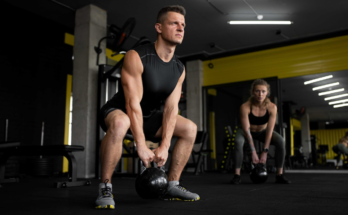Integrating Mindfulness Practices into Fitness Routines
In recent years, mindfulness has moved beyond meditation cushions and therapy rooms, finding a powerful foothold in fitness spaces. Athletes, personal trainers, and everyday exercisers are increasingly turning to mindfulness practices to enhance physical performance, prevent injury, and deepen the mind-body connection. But what does mindfulness really bring to a fitness routine—and how can you start incorporating it today?
Click here.
What Is Mindfulness?
Mindfulness is the practice of paying full attention to the present moment, intentionally and without judgment. In the context of fitness, it means tuning into your body’s signals, being aware of your movements, breath, and mental state, and letting go of distractions or self-criticism.
Benefits of Mindfulness in Fitness
1. Improved Focus and Performance
Mindfulness enhances concentration by training your brain to remain present. During workouts, this can lead to better form, more effective reps, and a deeper engagement with the exercise at hand.
2. Reduced Risk of Injury
By being more aware of your body’s alignment, fatigue, and pain signals, you’re less likely to push past safe limits. Mindful movement encourages proper technique and pacing, reducing the likelihood of strains and sprains.
3. Enhanced Recovery
Mindfulness promotes parasympathetic nervous system activity—critical for rest and recovery. Practices like mindful breathing or body scans can help reduce cortisol levels, lower inflammation, and promote better sleep.
4. Greater Motivation and Enjoyment
Staying present during exercise can help shift the focus from outcomes (e.g., weight loss, muscle gain) to the process itself. This can increase intrinsic motivation and make workouts more enjoyable and sustainable.
5. Better Stress Management
Mindful fitness routines help regulate emotions and lower anxiety. By merging movement with awareness, exercise becomes a powerful tool for managing stress.
How to Incorporate Mindfulness into Your Fitness Routine?
1. Start with Intentional Breathing
Begin each session with a few deep breaths. This anchors your awareness and shifts your attention from external distractions to your internal state. Try box breathing (in for 4, hold for 4, out for 4, hold for 4) for a minute or two before training.
2. Practice Body Scanning
Before or after your workout, scan your body from head to toe, noticing areas of tension, pain, or fatigue. This builds body awareness and helps tailor your workout to how you’re truly feeling.
3. Use Mindful Movement
Whether you’re lifting weights, running, or doing yoga, focus on each movement’s mechanics. Notice muscle engagement, joint alignment, breath rhythm, and how your body responds with each rep or step.
4. Integrate Meditation Post-Workout
After exercise, take 5–10 minutes to sit quietly and observe your breath or sensations. This can aid recovery, enhance mental clarity, and solidify the benefits of your physical efforts.
5. Let Go of Judgment
A mindful fitness routine encourages non-judgmental awareness. If a workout feels hard, if you’re slower than usual, or if you miss a goal—observe these thoughts without labeling them good or bad. This builds resilience and a healthier relationship with fitness.
Examples of Mindfulness-Based Fitness Practices
- Yoga and Tai Chi: Movement is synchronized with breath and awareness.
- Mindful Running: Focusing on breath, stride, and surroundings instead of music or metrics.
- Strength Training with Presence: Slowing down reps, engaging the breath, and focusing deeply on muscle engagement.
- Group Classes with Awareness: Participating with conscious presence rather than comparison.
Overcoming Common Challenges When Starting Mindful Fitness
Integrating mindfulness into your workouts can feel unfamiliar at first—especially if you’re used to high-intensity, fast-paced routines or multitasking during exercise. Here are some common challenges and how to navigate them:
1. “I Don’t Have Time for Mindfulness”
Mindfulness doesn’t require an extra hour—it can be as simple as taking a few deep breaths before your workout or paying closer attention during a set. Even one minute of focused breathing or body awareness can make a difference. Start small and build gradually.
2. “My Mind Keeps Wandering”
It’s normal for thoughts to drift—mindfulness is the practice of gently bringing your attention back when it does. If your mind wanders during a workout, simply notice it and return to your breath or movement without judgment.
3. “It Feels Boring or Too Slow”
Mindfulness isn’t about slowing everything down; it’s about paying attention. You can be mindful during an intense HIIT session or a long run. The key is presence—tuning in to your breath, body, and environment rather than zoning out.
4. “I’m Not Sure I’m Doing It Right”
There’s no perfect way to be mindful. The practice is about awareness, not perfection. Trust your experience and know that every time you choose to pay attention, you’re strengthening your mindfulness muscles.
Tools and Techniques to Support Mindful Fitness
To make the integration process easier, you can use a few practical tools and techniques:
1. Mindful Movement Apps
Apps like Headspace, Calm, and Insight Timer now offer guided movement meditations, mindful walking sessions, and body scans to accompany physical activity.
2. Journaling
After a workout, jot down how you felt physically, mentally, and emotionally. This reflection reinforces awareness and helps track patterns in your performance and recovery.
3. Music and Silence
Try working out without music from time to time to heighten your awareness of internal cues. Alternatively, choose instrumental or ambient music that helps you stay grounded.
4. Breathwork Techniques
Incorporate breathwork such as:
- Diaphragmatic breathing during rest periods
- Box breathing before a performance event
- Alternate nostril breathing to calm nerves before a workout
Real-World Examples of Mindful Fitness
Elite Athletes
Top performers like LeBron James and Novak Djokovic have publicly spoken about using mindfulness and meditation to gain a mental edge, improve focus, and manage pressure.
Personal Trainers and Coaches
More trainers are combining mindfulness with physical training, offering hybrid classes that include mobility, strength work, breathwork, and meditation—all in one session.
Rehabilitation and Recovery
Mindful movement is often used in physical therapy to retrain the body post-injury. It promotes slower, more deliberate movement and helps prevent re-injury by rebuilding neural pathways and proprioception.
Conclusion: A Stronger Mind Equals a Stronger Body
Mindfulness is more than a mental health tool—it’s a performance enhancer, injury-prevention strategy, and mindset shift all rolled into one. When you integrate mindfulness into your fitness routine, you’re not just working out your muscles—you’re training your brain to be more focused, resilient, and balanced.
Whether you’re a weekend warrior, fitness newbie, or seasoned athlete, mindful movement can transform your workouts from a mechanical routine into a deeply connected, empowering experience.
Read more.




